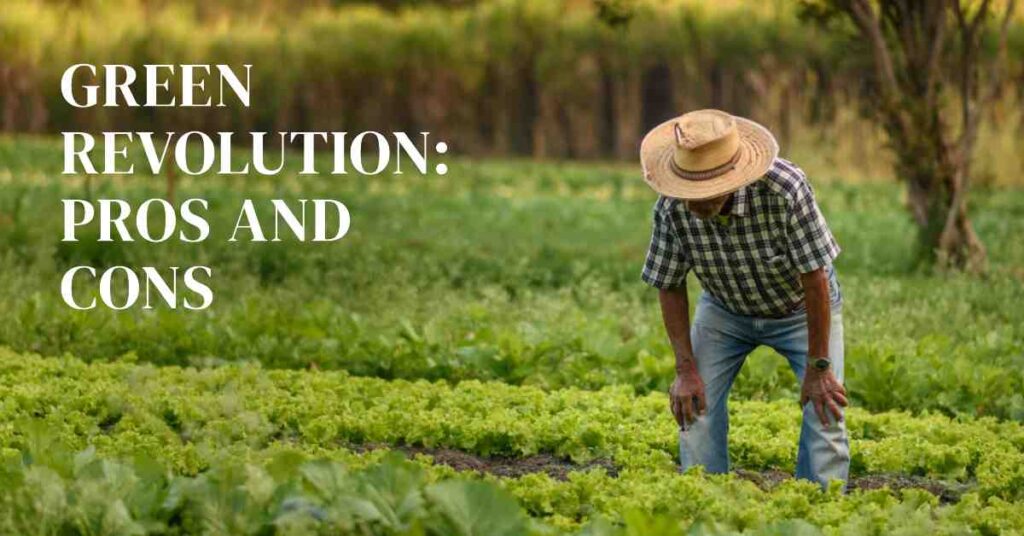
Advantages And Disadvantages Of Green Revolution: Detail Answer
More food is produced by the Green Revolution, but the environment suffers. Farmers make money, but they also use expensive seeds. Although it reduces hunger, it harms biodiversity. The secret to sustainable farming is balance. In this article we are going to discuss about the advantages and disadvantages of green revolution in a thoughtful manner.
Advantages And Disadvantages Of Green Revolution
A turning point in the history of agriculture, the Green Revolution changed agriculture on a global scale. This movement, which got its start in the 1940s, took to use modern agricultural techniques to increase food production. It had many advantages, but it also presented some difficulties. The following 10 Advantages And Disadvantages Of Green Revolution should be carefully considered:
Advantages Of Green Revolution
Enhanced Crop Yield: The Green Revolution greatly increased crop production, ensuring a more available food supply. This was made possible by the introduction of high-yield crop varieties and modern farming techniques.
Reduced Hunger: More people had access to nourishing food as a result of the increased agricultural output, which helped to reduce hunger and food scarcity in many parts of the world.
Economic Growth: The Green Revolution increased economic growth in many countries by increasing agricultural productivity, which in turn led to more job opportunities and overall economic stability.
Technological Innovation: The Green Revolution encouraged farmers to use cutting-edge farming tools and techniques for more productive farming practices, thereby promoting the adoption of contemporary agricultural technology.
Agricultural Diversity: By promoting the growth of a variety of crops, farmers were able to reduce their dependence on a single crop and diversify their farming methods, which improved overall agricultural sustainability.
Also Read: Paragraph on Clean India Green India for Students of Class 5,6,7,8 and 9
Disadvantages Of Green Revolution:
Above we have discussed about Advantages Of Green Revolution and now let’s take a short and sharp look at Disadvantages of the Green Revolution:
Impact on the Environment: During the Green Revolution, there was a rise in the use of chemical pesticides and fertilizers, which resulted in soil erosion, water pollution, and biodiversity loss.
Soil Degradation: Overuse of pesticides and fertilizers led to the loss of soil nutrients, gradually decreasing the land’s fertility and compromising the sustainability of agriculture in the long run.
Water Scarcity: The extensive irrigation techniques employed during the Green Revolution resulted in a shortage of water in some areas, which exacerbated the strain on already-depleted water supplies.
Health Risks: Farmers and consumers were exposed to chemicals in pesticides and fertilizers, which could cause long-term health complications like skin diseases and respiratory disorders.
Loss of Traditional Farming Practices: Indigenous agricultural knowledge and cultural heritage were lost as a result of the Green Revolution’s abandonment of local crop varieties and traditional farming techniques.
In order to shape our approach to modern agriculture and promote sustainable farming methods that benefit both people and the environment, it is imperative that we understand these Advantages And Disadvantages Of Green Revolution.